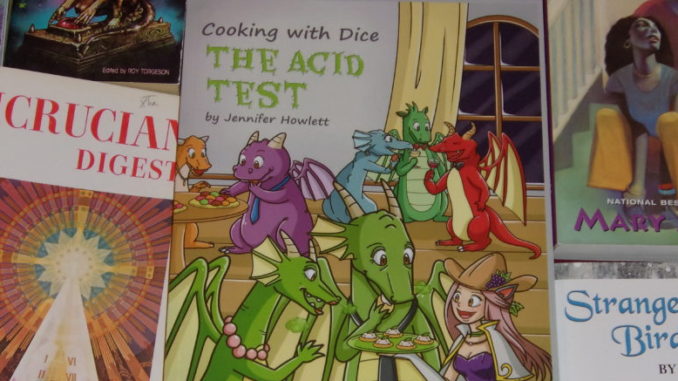
Anyone who cooks or bakes has faced the problem of substitutions in a recipe. An ingredient that you thought you had is missing from the refrigerator or pantry, and improvisation is suddenly required; or someone has an allergy to a recipe component and it’s off to the races, trying to determine what will approximate the taste and texture without altering the chemistry of the dish too much.
No sane person would write a book that made those types of scrambles a central feature. But gamers are rarely sane.
Cooking with Dice is an effort to introduce role-playing games into the kitchen. From their Kickstarter:
Cooking with Dice combines the best parts of an RPG with real-life cooking. You’re presented with a set of character sheets, a scenario, a selection of formulas, roll tables, and a scoring system that allows you to level up your characters. You can play solo, cooperatively, or competitively with friends and family.
As we all know, just because something has a Kickstarter doesn’t mean it’s going to be successfully funded. Let’s see how they did:
$9,125 pledged of $2,500 goal
333 backers
The first book to support the RPG is called The Acid Test. The theme is that the characters are caught in a scenario for which they are required to host a dinner party for a bunch of dragons, moving the game much closer to the “storyteller” format of the White Wolf games than the classic “D&D” style that grew from wargames and miniatures combat.
Where the idea fully comes into fruition, however, is in the recipes. Because the book does contain recipes… but what you’re going to do with them does not depend on your guests’ appetites or what can be found fresh but rather on the roll of a die.
Quick pickling is explained… and then the “player has to roll to see what type of vegetable they’re going to pickle. It could be cucumbers… or it could be asparagus, or hot peppers, or brussel sprouts. For the marscarpone rollup recipe, the player is rolling one ten-sided die to determine what flavor of coffee creamer to add, another to determine what type of nut, a twelve-sided die for the dried fruit to be added, and a twenty-sided die for the lunchmeat. There are many other examples, but that seems to typify the recipes, when four key components of a simple dish can be randomly selected into more than 20,000 combinations.
So, to sum up: it’s a cookbook / game that doesn’t really focus on flavors as much as demonstration of basic techniques. The players are expected to modify the flavors with spices to cover, as best they can, the flaws in the dish.
It’s understandable to want to overcome a challenge. But there’s not even any guarantee of a challenge. It’s all random.
But gamers are weird, and hundreds of people thought this was a great idea.
Question of the night: What’s your favorite non-electronic game?
